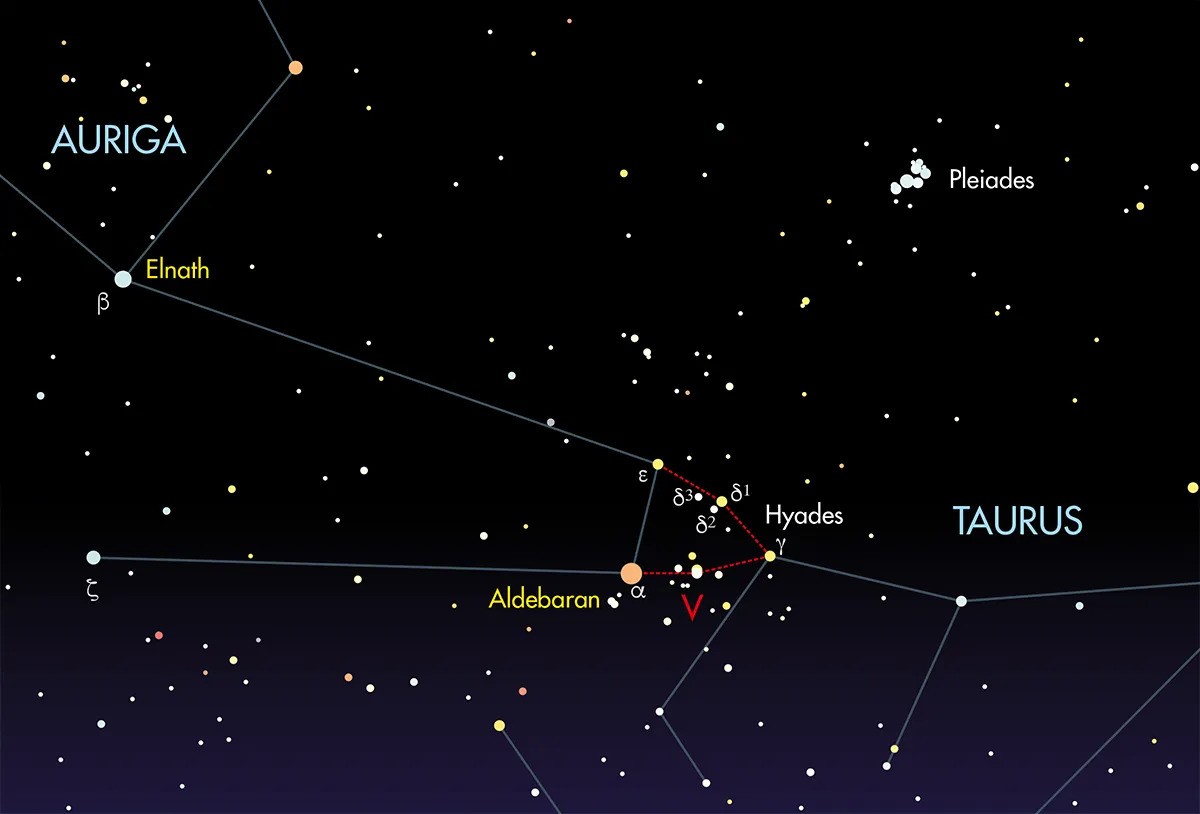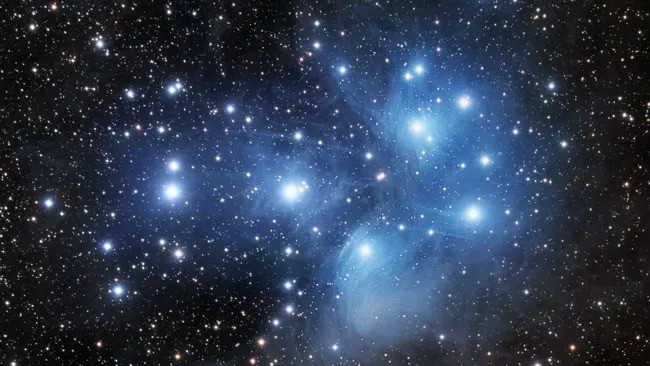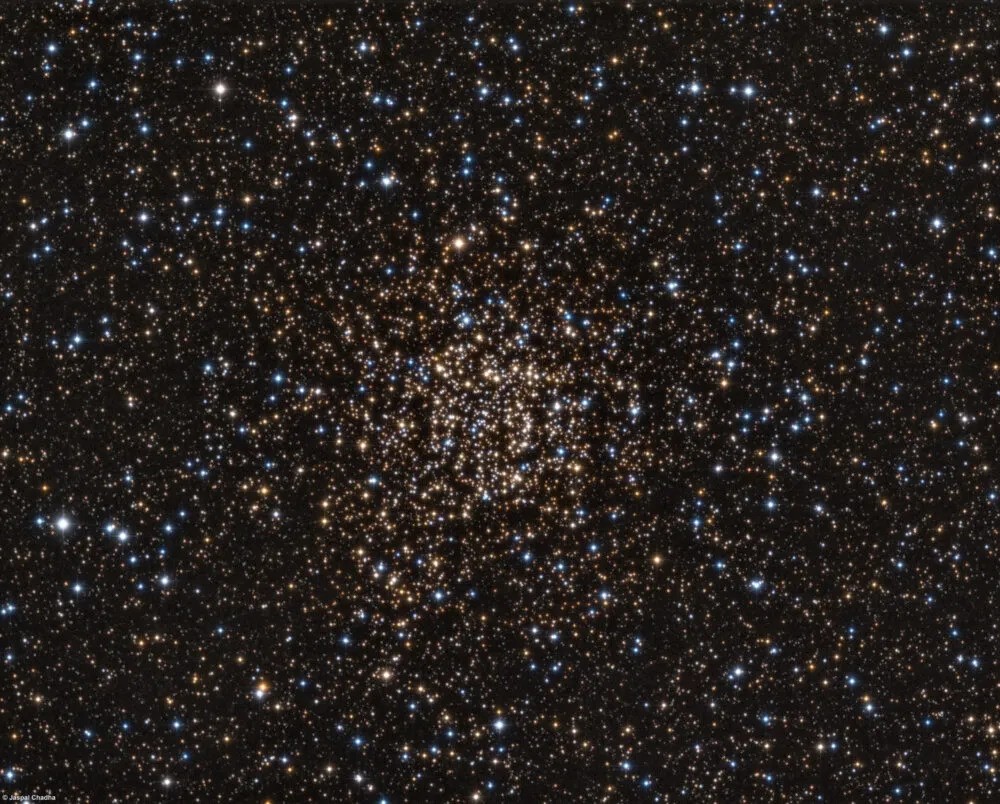What's Up? February 2024
Love is in the air, it must be Feburary! Astronomer and Science Communicator Rosie Braunholtz gives us an overview of what we can see in the night skies this season of lovers.
What's Up February
Hello, it’s time for another What’s Up in the month of February. Our shortest month of the year, quieter astronomically speaking than other months, but there’s still plenty to see!
Of course we still have many of the winter showstoppers that were mentioned in January and December’s What’s Up’s, such as the Orion Nebula and the Andromeda galaxy. But let’s look at some of the other gems in the sky that maybe you might not know so well.
The Daughters of Atlas
Two star clusters: The Pleiades and the Hyades in Taurus. Two lovely open clusters, visible to the naked eye but perhaps best seen with a small pair of binoculars or a small telescope. Both of these clusters have been known for thousands of years all over the world. In Greek mythology the Hyades and the Pleiades were daughters of Atlas, though had different mothers. Both groups of sisters were transformed into a cluster of stars that was afterwards associated with rain.

[Picture 1: Taurus]. Image credit: Pete Lawrence, Sky at Night Magazine, BBC
The Pleiades, also known as the seven sisters, is probably the most famous star cluster, as it’s the one most easily visible to spot, even without a telescope. In Japan, the cluster is named Subaru! And the car company chose this name after the joining of five companies together. To the naked eye you will see a little fuzzy patch to the right of Taurus the bull, if you let your eyes focus you might be able to count about 7 stars. However, if we were to zoom in on this patch, we would see around a thousand stars! All these stars are grouped together and gravitationally bound to one another. This is because they all formed from the same gas cloud at the same time, so calling them sisters is pretty accurate. Looking at the size of star and blueish colour, we can tell they were born fairly recently! Only 100 million years old or so (basically still a toddler in star terms).

[Picture 2: Pleiades] Image credit: Manfred_Konrad via Getty Images
The Hyades, is perhaps the lesser well-known sibling to the Pleiades. It’s actually closer to us – being only 150 light years away (440ly for Pleiades). But because it’s so close, the star cluster (which spans about 10 light years across) looks more scattered around the sky rather than in one small clump, so you might not have noticed it before. To find it you need to go to the eye of the bull: Aldebaran, the bright red star in the middle of Taurus. And you’ll see it’s part of a “V” shape. This “V” is the Hyades! Though Aldebaran is not actually part of the cluster, it’s even closer – around 65 or so light years away. There are about 500 stars in the Hyades and a few of them we have even found exoplanets going round!
Love is in the air..
It is the month of love, for any romantics out there, let us look at some love themed objects in the sky.

[Picture 3: Heart Nebula] Credit: Flickr Commons/s58y
Venus, the goddess of love, ironically isn’t in the sky that much. Except in the first few days in February just before sunrise, say at about 7am and look to the south-east.
While not anatomically correct, show your valentine the Heart Nebula in the constellation of Cassiopeia! This is a beautiful cloud of ionized gas that is emitting predominantly red light, giving the appearance of a heart <3. Amongst the core of this cloud of gas are many stars in a cluster that were born out of this stellar nursery. It’s about 7500 light years away! And the nebula itself spans 165 light years across. It’s best to look at faint objects like nebula and galaxies when there is little to no moon in the sky, so aim for the second week of February when it’s New Moon.
We also have the Caroline Rose Cluster also within Cassiopeia. This star cluster was discovered in 1783 by Caroline Herschel. It gets it’s name from the looping stars and dark shadows which look like the swirling pattern of rose petals.

[Pictue 4: rose] Image Credit: Caroline's Rose by Jaspal Chadha, London, UK
The Wanderers
February is definitely the very last chance of seeing Saturn this year (from the UK). The first week of February is your best bet as it’s still dark enough in the early evening to catch it. You’ll need to have a clear horizon in the south-west and look for a bright spot in the sky at about 18:00.
Jupiter is still visible though it’s getting closer and closer to that western horizon, and visible only in the first part of the night now. For a good astrophotography shot, the 14th and the 15th the moon and Jupiter are close together.
Shooting Stars & other objects
If you’re looking to spot meteors in February, I’m afraid the only shower is visible from the southern hemisphere. On February 9th the α-Centaurid (“alpha Centaurid”) meteor shower will peak. The α-Centaurids usually occur from January 28th to February 21st each year. The peak will be on February 9th where you can expect to see roughly 5 meteors per hour radiating from the constellation of Centaurus. So if you’re on holiday in Aus – have a look outside!
We have a few ISS pass overs at the very start of February. When looking for the ISS look to the west for a very bright satellite that’s moving slowly towards the south/south-east. On the 1st of February we can expect two ISS passes, one starting at 17:50, and another very low on the horizon starting at 19:26. The 2nd will have a passes starting at 18:39, and the 3rd will have one starting at 17:49.
















